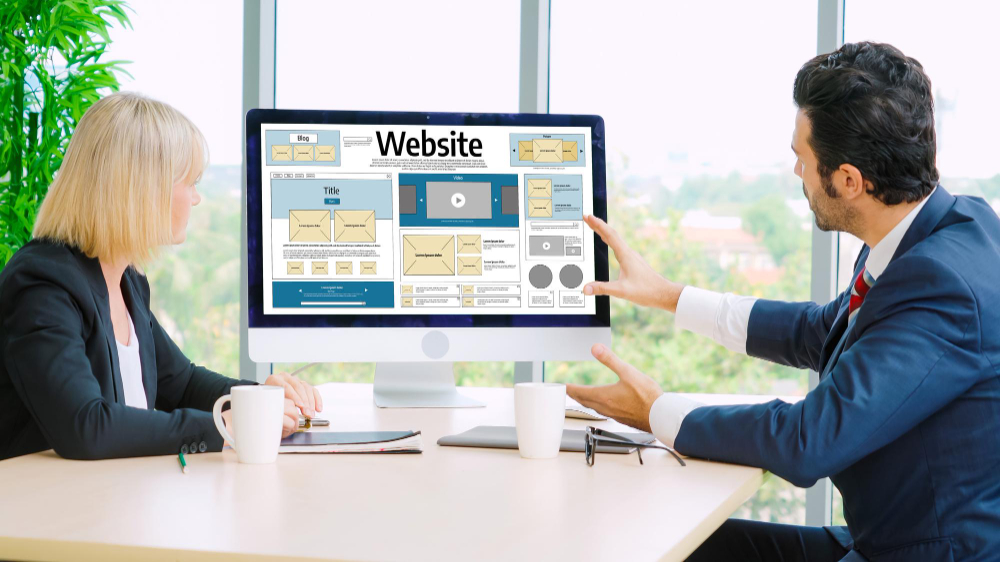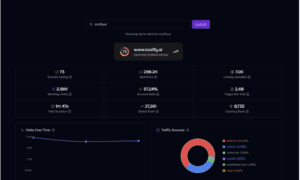A website is an extension of your brand, a tool for engagement, and a gateway to conversions. Visitors form an opinion within seconds, and their experience determines whether they stay or leave. A well-designed, user-friendly, and aesthetically pleasing website keeps users engaged, encourages trust, and improves overall satisfaction. However, great user experience (UX) goes beyond aesthetics. It involves speed, accessibility, clear navigation, and even security. To truly provide an excellent experience, you must consider how users interact with your site, anticipate their needs, and remove any barriers that might disrupt their journey.
Fast Loading Speeds Are Non-Negotiable
No one likes to wait, especially online. Research indicates that users anticipate web pages to load within two seconds or less, and anything longer increases bounce rates significantly. Slow pages frustrate visitors and harm your search engine rankings. Optimize images, leverage browser caching, and minimize HTTP requests to improve performance. A content delivery network (CDN) can also help by distributing content across multiple servers worldwide, reducing load times. Consistently assess your website’s performance with tools such as Google PageSpeed Insights to detect and resolve any slowdowns. A fast-loading site ensures visitors stay engaged and explore what you have to offer.
Simple and Intuitive Navigation
Your website should guide users effortlessly to what they need. Complicated navigation confuses visitors and leads to frustration. Keep your menu structure clear and logical, with concise labels that accurately describe each section. A search bar is essential for larger websites, allowing users to find content quickly. Breadcrumbs can also help users backtrack without starting over. Make sure all links and buttons are easy to click and interact with and avoid cluttering your pages with excessive options. When navigation is intuitive, users don’t have to think twice about where to go next, creating a fluid and enjoyable browsing experience.
Mobile Optimization Is a Must
As mobile traffic now exceeds desktop usage, a responsive website is no longer optional. If visitors struggle to navigate your site on a smartphone or tablet, they won’t hesitate to leave. A responsive design allows your website to adapt effortlessly to various screen sizes, maintaining usability and readability. Avoid small fonts, unclickable buttons, and excessive zooming. Check your website on different devices to ensure consistency. Google favors mobile-friendly websites in its search rankings, making optimization critical for visibility. A mobile-first approach guarantees that all users, regardless of device, have a smooth and frustration-free experience on your site.
A Secure and Trustworthy Website
Visitors should have a sense of security while navigating your website, especially if they’re providing personal or payment information. Implementing SSL certificates, encrypting data, and using strong authentication methods help build trust. Cyber threats continue to advance and adapt over time, which makes it essential to stay ahead of cyber security risks by updating software, monitoring vulnerabilities, and protecting user data. Websites that appear unsafe or unprotected often drive visitors away, reducing engagement and credibility. By investing in robust security measures, you not only safeguard your business but also provide peace of mind to your visitors, which ensures they can browse and interact with confidence.
Engaging and Readable Content
The way content is structured significantly impacts user experience. Visitors scan rather than read, so breaking up text into digestible sections enhances readability. Enhance readability by incorporating headings, bullet points, and concise paragraphs to improve clarity. A conversational tone keeps users engaged, while clear calls-to-action (CTAs) direct them toward their next move. Font choice matters too: stick to legible, professional fonts and maintain sufficient contrast between text and background. Images and videos should complement content, not overwhelm it. By presenting information in a visually appealing and accessible way, you ensure that visitors absorb your message without feeling overwhelmed or disengaged.
Prioritize Accessibility for All Users
An accessible website allows all users, regardless of ability, to navigate and interact with your content effortlessly. Adding accessibility features like alt text for images, keyboard-friendly navigation, and proper color contrast enhances usability for visitors with disabilities. Captions on videos assist those with hearing impairments, while screen reader compatibility makes text-based content accessible to visually impaired users. Following Web Content Accessibility Guidelines (WCAG) broadens your audience and improves your search rankings. Prioritizing accessibility isn’t just about compliance. It’s about providing a seamless experience for all users and fostering a more inclusive digital space.
Regular Testing and Continuous Improvement
User experience is not a one-time effort. It requires ongoing refinement. Regularly conduct usability testing to identify pain points and areas for improvement. Heatmaps and session recordings can provide insight into user behavior, helping you understand what’s working and what’s not. A/B testing different layouts, button placements, and content structures allows you to optimize engagement. Pay attention to analytics, such as bounce rates and conversion rates, to gauge performance. Gathering user feedback through surveys or direct interactions also provides valuable insights. Continuous improvement ensures that your website evolves with user expectations, keeping visitors satisfied and engaged.



































